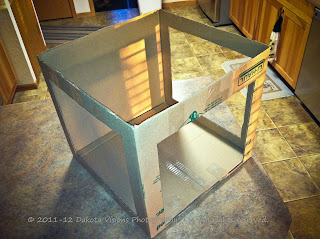Depth of field (DOF) is the distance between the nearest and farthest objects in a scene that appear acceptably sharp in an image. Although a lens can precisely focus at only one distance at a time, the decrease in sharpness is gradual on each side of the focused distance, so that within the DOF, the blur is imperceptible under normal viewing conditions.
In some cases, it may be desirable to have the entire image sharp, and a large DOF is appropriate. In other cases, a small DOF may be more rewarding, emphasizing the subject while de-emphasizing the foreground and/or background.
 |
| 70mm - f/18 |
 |
| 70mm - f/4.0 |
Quick Reference Guide: Depth of field is governed by three factors - aperture, lens focal length, and shooting distance. Remember the following relationships:
- The smaller the aperture, the deeper the depth of field (the other two factors remaining the same). For example, if the lens focal length and the shooting distance stay the same, the depth of field is much deeper at f/16 than at f/1.4.
- The shorter the lens focal length, the deeper the depth of field (the other two factors remaining the same). For example, comparing a 28mm lens with a 50mm lens at the same aperture and shooting distance, depth of field is deeper with the 28mm lens.
- The greater the shooting distance, the deeper the depth of field. For example, if the subject is photographed from 10 and then from 25 feet away, the zone of sharpness is greater at 25 feet.
 |
| 70mm - f/18 |
 |
| 70mm - f/5.6 |
So what DOF should you use in your photographs? That is where your artistic interpretation comes into play. What are you trying to emphasize? The person? The background including the national landmark, Mt. Rushmore? Each photograph tells a story - it's now your turn to use the depth of field photographic knowledge to help choose which story to tell.
Next week's photography challenge is the letter 'E'. We've already started thinking about what to do to get our of our 'photographic box' for next week's challenge.
Don't forget that if you want to share your own photographs from your weekly challenge with the letter 'D', just include the link to your web gallery in the comments below (Flickr, Picasa, or others).
We hope you enjoyed and learned a little from the weekly photographs. We will See You Behind the Lens...















